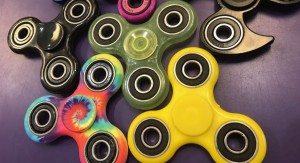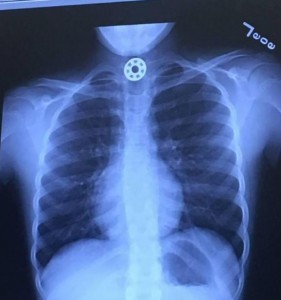Fidget spinners: tales of haircuts, school bans, emergency surgeries
Posted on
Kids love their fidget spinners – so much so that one 6-year-old decided he would get a fidget spinner haircut.
Yes, a youngster had an image of the toy phenom buzzed into the back of his spikey hairdo.
The boy’s older brother, Ryan Campbell, told Mashable that his style-conscious sibling got the ’do at a local barber shop, complete with small cutouts that gave the impression that the coveted toy was spinning.
“At first I was just dying of laughter,” Campbell told the website. “I got my own fidget spinner and held it up to the cut to compare and he thought it was hilarious.”
Hospital Drama
A 10-year-old girl from Texas was hospitalised after she accidentally swallowed a piece of her fidget spinner.
She was taken to hospital but doctors couldn’t tell whether the piece was in her airway or oesophagus so an ambulance rushed them to Texas Children’s Hospital near Houston.
An x-ray showed the piece of metal was in her oesophagus and it was removed through surgery.
The girl’s mum Kelly Rose said: “Fortunately, we had a positive outcome, but it was pretty scary there for a while.”
Now she is warning other parents about the peril the toys can represent.
She said: “Not all spinners come with age-appropriate warnings. The bushings pop out easily, so…. keep in mind that these present a potential choking hazard.”
The Herald Sun reports that fidget spinners have principals and health experts worried they are disrupting children’s learning.
Youngsters globally are rushing to buy the latest craze — primarily developed for autistic children and people who have trouble focusing or fidgeting by acting as a stress-relieving device.
It is the number one selling toy online.
But South Australian Primary Principals’ Association president Pam Kent says principals are reporting the devices are doing the exact opposite of what they were originally designed for.
“It is becoming a problem,’’ Ms Kent said.
“Principals feel they are not being used for the intended purpose of being a sensory tool to help kids with their anxiety and help them engage more in their learning.’’
Flinders University occupational therapist Sandra Mortimer said: “I think (teachers) would already have a good idea of the kids that it may benefit but also have to function around having 30 kids in the classroom’’.


